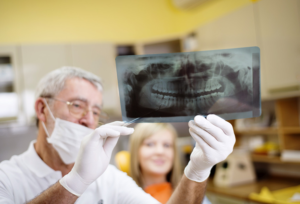Anyone can recover from the adverse effects of addiction with treatment from drug and alcohol abuse rehabilitation facilities. The treatment involves medical assisted treatment and different forms of therapy to help with major lifestyle changes for the patient.
Although the time taken for recovery varies for every individual, it is recommended that people spend not less than 90 days in the treatment facilities. Not knowing what to expect at the drug and rehab center may cause you to be nervous.
As soon as you reach out to a professional for drug and alcohol rehabilitation, your process of recovery and treatment begins in a systematic manner. Here’s a breakdown of the key steps followed by drug and alcohol rehab facilities to ensure successful recovery for their patients.
1. Admission to a Drug and Rehab Center
Depending on the level of addiction, you can be admitted as either an inpatient or as an outpatient. However, admission as an outpatient largely depends on your flexibility to attend the rehab sessions and continue with your daily routines. Most people prefer outpatient programs because they cannot be away from work or family.
2. Drug Detoxification Process
After admission, the first step of treatment is detoxification. This step involves the removal of drugs and alcohol from the body, and it can be a very trying time for some people depending on the drugs abused and the level of dependence.
Some patients experience withdrawal symptoms that require medical treatment to deal with the symptoms. Patients with such symptoms are usually monitored 24/7 and are advised to go with inpatient treatment programs.
The detoxification process is vital as it cleanses your body and prepares you for the following steps to recovery.
3. Different Types of Therapy
Therapy is a crucial step of the process as it helps find the root cause of addiction and how to handle the matter so the patient can prevent relapse.
That said, there are different forms of therapy, but here are three common types you can expect to find at any drug and alcohol rehab facility.
Individual therapy is a session between you and your therapist to help you personally understand your addiction, its effect on you both mentally and physically, and how you can control your cravings for the drug.
Group therapy involves other people struggling with addiction sharing their experiences and encouraging each other to fight the adversity of addiction. People share lessons they have learned as they narrate their life stories.
Family members can also be involved in therapy to understand how they relate to the addict and how their addiction affects them. The family also offers a support system that can help boost the recovery process.
4. Aftercare Recovery Treatment
After the rehabilitation process at the drug rehabilitation center, your counselor will analyze your recovery process and recommend the best aftercare treatment for you.
Aftercare recovery treatment will involve your physician and therapist doing checkups on you to make sure you’re doing fine. This can go a long way in reducing the chances of relapse.
The Bottom Line
Different people have different recovery journeys, but alcohol and drug recovery is a lifetime commitment. You might be required to change a lot of aspects of your life to maximize your chances of full recovery.
Hopefully, the steps highlighted above are insightful enough to convince you to consider checking yourself or a loved one into a drug and rehab center.
a Drug and Rehab Center? Find Out What Happens Next Here





Be First to Comment